Andrew Paul Wood – 6 December, 2016
This isn't a comprehensive survey and it doesn't pretend to be. An obvious split with older photography is the naked acknowledgement of the broken contract with realism. There is an acknowledgement of the validity of moving image and photobook, which is a corrective counterpoint to the recent Te Papa survey. However, even factoring in their relative career stages, it's sometimes difficult to see what's going on through the scrim of influences not completely digested and synthesised.
Christchurch
Andrew Beck, Holly Best, Jordana Bragg, Conor Clarke, Chris Corson-Scott, Solomon Mortimer, Ane Tonga, Shaun Waugh, and Rainer Weston.
The Devil’s Blind Spot: Recent Strategies in New Zealand Photography
Curated by Lara Strongman
19 November 2016 - 12 March 2017
One of the really great things about Christchurch Art Gallery is an on-going commitment to younger and emerging artists, which is part of the impetus behind The Devil’s Blind Spot: Recent Strategies in New Zealand Photography, curated by CAG senior curator Lara Strongman. The title is taken from the 2004 collection of short essays The Devil’s Blind Spot: Tales from the New Century by German writer/director Alexander Kluge. This is fitting as he similarly seeks to stimulate the consciousness with close and unexpected perspectives.
Photography is the supreme visual medium of our time, ever threatening to supplant reality. The advent of cameras linked directly to the internet by the mobile phone has made the photograph ubiquitous and rewired the way we see our environment - Baudelaire’s “monstrous nausea of posters” for the digital age. With this in mind Strongman has elected to concentrate on New Zealand artists who were born in the 1980s and ‘90s, who grew up with the digital image and other ways that they differ from earlier generations of photographers.
This isn’t a comprehensive survey and it doesn’t pretend to be. An obvious split with older photography is the naked acknowledgement of the broken contract with realism - Pilate’s retort “What is Truth?” (John 18:38). There is an acknowledgement of the validity of moving image and photobook, which is a corrective counterpoint to the recent Te Papa survey. However, even factoring in their relative career stages (but to be fair, most have been exhibiting for a while now), it’s sometimes difficult to see what’s going on through the scrim of influences not completely digested and synthesised.
For example, Chris Corson-Scott’s art-historically significant image of his late father’s studio (more interesting to me than, though strangely at odds with, the accompanying long-exposure landscapes), is still heavily indebted to Neil Pardington and the social associations of its subject matter. In the landscapes there is a strong aesthetic genealogy with Haru Sameshima (with whom he shares a studio) and Mark Adams. There are elements of Ans Westra’s environmental images, and Corson-Scott consciously aligns himself nineteenth-century New Zealand artist Alfred Sharpe’s scenes of colonial deforestation and French photographer Eugene Atget documenting of about to be demolished buildings in Paris with an ancient bellows camera at the turn of the previous century. The anachronism of landscape is conscious and earnest, but has it found its own voice? And yet, his portrait of Mark Adams touching up a portrait of Tony Fomison has a poetic, Old Dutch Master quality to it that is very moving.
Ane Tonga’s Grills and Fakaētangata series, documenting the Tongan practice of nifo koula (gold crowned teeth), for all its spontaneity, questions about culturalised notions of beauty, mana, and self-aware playing to Palangi art world voyeurism, could have, perhaps, been edited back further to bring out their strengths. Their pursuit of spontaneity over the technical tends to dilute their appeal and amplify their flaws when presented in quantity - basically, there’s just too many pictures for the allotted space and they can’t breathe. The strongest images echo the powerful symbolic and visual mouth tropes of Anne Noble’s Ruby’s Room works of 1998-2007, while the weaker resort to the most obvious compositional impulses and coast along, but are definitely coasting in the right general direction.
Jordana Bragg is represented by ten stills from a video documentation of Bragg’s performance piece Days Since and Again (So Soon) and originally exhibited on-line in a way that redefines linear sequential time and notions of what it means to experience and be present. In a way it could be thought a little intellectually dishonest to pin Bragg’s butterfly-like practice to the white walls of the gallery in static form when its natural ecology is social media - especially the ephemerality of Snapchat. Russian poet Anna Akhmatova’s complicated long poem “Poem without a hero” comes to mind with its attempt to represent the flow and fragmentation of memory and consciousness.
Rainer Wilson attempts to deconstruct the CAG photographer John Collie’s postquake images of the gallery building with a painterly clone tool (reminding me quite a lot of earlier Andre Hemer paintings). Shades of looking into The Matrix. Another group of works that previously only appeared on-line, are also here, printed luxuriantly on satin. There is a complex interplay between the physical object and virtual image, and the sheer mass of images that can be created quickly (whether they leave any lasting impression, of course, is another matter). They are attractive works, but feel more like a light snack than a substantial meal, though that is a perfectly legitimate area to explore when endless bombardment of media presses us into an eternal present with neither past nor future.
The apparent banality of Conor Clarke’s subject (a Becher/Frank Breuer-esque catalogue of construction sites in Berlin) in her Scenic potential works belies the complex editing together of individual focal elements (taken with an analogue camera) that create such oddly vast, sublime, yet oddly hyperreal and intense, spare, lunar landscapes. The influence of Wayne Barrar is palpable, and the work is also clearly part of the same topographical sphere as Lloyd Godman, Murray Hedwig, Bruce Forster.
Shaun Waugh is represented by three discrete suites of work. ΔE2000 1.1 (deltaE 1.1) takes an interesting conceptual slant on the familiar culture of photography as much as the digital photograph itself: an installation of twenty-four found Agfa film boxes framing an exactly matched colour-matched monochrome print. I am reminded of John Nixon’s monochrome paintings, which by happy coincidence are a very similar shade and intensity of orange.
The second grouping is Covenant cut-out, a fetching grid of landscapes representing remnants of native bush on private land in Taranaki (where Waugh grew up). The significance is that these are covenanted by the QEII National Trust Act, 1977 and cannot be touched by the landowners. Waugh Photoshops out the patch of bush and replaces it with a field of one of the twenty-four colours of the GretagMacbeth ColourChecker chart used by photographers to calibrate natural surfaces. Waugh simultaneously highlights them and their artificiality, and perhaps there is just a hint of the Warhol pop serigraph there as well.
The third group consists of four images from Waugh’s recent Drop-Shadow series. The colours are again drawn from ColourChecker, and the trompe-l’œil - reminiscent of a “how to” exercise in computer manipulation - are an entirely digital artefact. The result is complex and subtle.
Holly Best’s Enigmatic photographs are informal diptychs combining a flâneurial (and somewhat metaphysical) diary of post-quake Christchurch with written texts (self-critical notes about what’s wrong with the image), recalling John Baldessari’s 1969 series Wrong (a self-conscious breaking of the rules) and Mary Kelly’s Post-Partum Document. The viewer seems invited to speculate, chicken and egg fashion, as to whether the texts or the photographic image came first. Do the texts ekphrastically describe the image or does the image illustrate the text? Therein lies the frisson. This leads us into some interesting philosophical territory after J. L. Austin as to whether the texts are illocution or perlocution, felicitous or not.
Andrew Beck seeks to reinvent the Bauhaus photograms (bypassing the camera entirely) in imitation of László Moholy-Nagy, and even surpassing them with the added richness and depth of luminously fluorescent enamel paint and clever assimilation of his allotted gallery corner by only included a few works, scooping into the room with a wall drawing. Just as Moholy-Nagy wanted to get us away from pictorialism by enchanting us with the abstract, photographic mechanics, and objectness, Beck clearly understands how to work a room. Obviously the haecceity of process and duration, the literalness of photo-graphy, drawing with light, are all there, but it’s the actual retinal presence that makes them so arresting, especially in an age saturated with consciously and/or algorithmically mediated images à la Baudrillard and poor Walter Benjamin.
At first glance Solomon Mortimer might merely seem to be recycling a kind of Cindy Sherman-esque self-portrait theatre of subjective personae, but his work coheres together splendidly. While it is somewhat ambiguous as to whether he is indulging in gentle homage or ruthless parody, his invocation of photographers from Herb Ritts to Yvonne Todd is pitch perfect. While he might not be saying anything terribly new (and he doesn’t need to), he says it with considerable virtuosity and confidence, and in the era of the selfie this gives them a kind of ironic urgency.
The shelf of photobooks offers another side to Mortimer’s practice; his deeply affecting and atmospheric documentary photography, which in their way are still just as subjective and ambiguous.
I’m not convinced that the strategies on display really are all that recent in most cases, and I was a tad surprised Tim Veling’s work wasn’t included - born in 1980 he certainly squeaks in, and were it me I might have included Paul McLachlan, Edith Amituanai and others, but acknowledging the spatial limits, all up, it’s a useful and pleasant sampler or a diverse group of artists going places.
Andrew Paul Wood
Recent Comments
Andrew Paul Wood
Respectfully, while I must apologise for the migrating parenthesis when I reworked that particular sentence - it is of course ...
John Hurrell
I think you're over reacting, Chris. Look at Artforum or Art in America where you get one or two images ...
Chris Corson-Scott
Hi John, thanks for the response. Considering most reviews for such a show are going to summarize each artist, it's ...
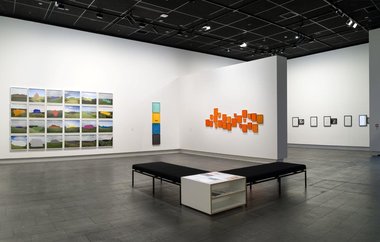
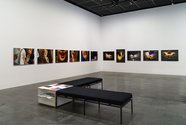
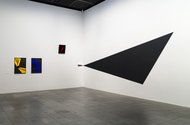
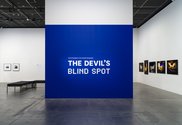
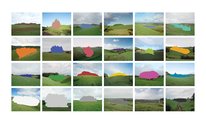
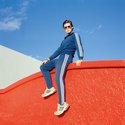

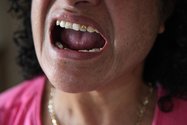

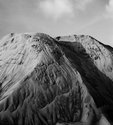
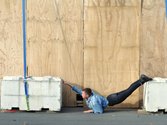
 Two Rooms presents a program of residencies and projects
Two Rooms presents a program of residencies and projects Advertising in this column
Advertising in this column



This Discussion has 6 comments.
Comment
Chris Corson-Scott, 9:39 p.m. 10 December, 2016 #
Hi Andrew,
I’m often a fan of your writing, but I feel compelled to respond here as I think your comments in this instance about my work are a bit off base.
You say that “My Father’s Studio, Three Months After His Death From Cancer, 2013” is “heavily indebted to Neil Pardington”. Pardington’s photographs are influenced by Candida Hofer (are you going to mention that too?) & more generally the typologies methodology employed by August Sander – later Bernd & Hilla Becher. His deadpan photographs intend the framing/presentation to be as transparent as possible, so that each almost identical image can be compared with minimal interference of subjectivity from the photographer. The subjects themselves are, if not public, then public institutional spaces that are not personal to the photographer. These things are literally the opposite of what I am doing, & the tradition I’m trying to work in. My work is double the size of Neil’s & supposed to be taken as an autonomous image.
I don’t know if your parents are still alive, but to compare a photograph of a secretively private personal space, made while in absolute grief three months after the loss of my father, to Neil’s cool museum storage photographs to me completely misses the point of both practices. References that come closer would be Marie Shannon’s photographs & video works about Julian Dashper, Andre Kertez’ pictures of Mondrian’s studio (particularly his pipe & glasses), Mitch Epstein’s “Family Business”, Larry Saltan’s “Pictures from Home”, William Eggleston’s Memphis works, William Christenberry, or the formal studies of Jeff Wall – to not mention painting or cinema at all.
As for the comparison with Haru Sameshima, Haru’s work (at least “Bold Centuries”, to which you refer) is about the negation & impossibility of a personal style in favour of a post-modern appropriation or adoption of both all means of photographic image creation (every type of camera/technology), & canonical image appearance & structure. In other words, his point is precisely he has no style, & that everything can only be a reference to something else (depending on the depth of your knowledge of a medium’s history). So when you say my work is derived from his, again, you’ve totally missed what he’s saying, which is that his work is really a Robert Adams, which is actually a Carleton Watkins, which is really a topographic painter, etc (in a hundred directions). Haru does state those ideas pretty clearly in the introduction to “Bold Centuries”, as do many of its essays & the writings around his work if you read them. By the way, if we share a studio, I’m sure it’s news to both of us.
Chris Corson-Scott, 9:39 p.m. 10 December, 2016 #
I think you’re seeing the pattern here, but I might as well complete things & address the inattentive Ans Westra comparison too. Her work is spontaneous, small camera/hand held picture making, generally from the road/car on public property, coming out of the Robert Frank road trip tradition & political photography. That’s the opposite of the Walker Evans view-camera line of photographers that influences me. Most of my work involves prior research, & then gaining entry to sites either because they have a personal connection, or by developing a relationship with the owner of the private property, or many times trespass when there is no other option. It’s an attitude & way of working totally foreign to what she is interested in. Not to mention her works are intended as small books – she doesn’t stage people/figures, or shoot interiors, or directly personal subjects.
Beyond that, you’re just wrong about the sequence of events. “Our Future” (the Westra publication you’re talking about, & her only work remotely like mine), was released mid-2013. I have been doing what I’m doing publically since 2010 (privately from 2006). In mid-2013, I published a book about environmental photography/land usage “Pictures They Want to Make: Recent Auckland Photography: Photoforum/Rim Books, 2013” – i.e. exactly the same time as Ans’ book came out, which is the first time anybody (myself included) saw that work of hers. I was also in an exhibition a few months later in 2013 at Auckland Art Gallery with John Kinder, Mark Adams & Haru Sameshima – surely a fast use of copying to get somewhere by any measure. Anyway, if you think Ans Westra invented contemporary colour photography from the New Zealand archipelago in 2013, I’m not really sure what to tell you, but perhaps you should familiarize yourself with Saul Leiter, Helen Levitt, William Eggleston, Stephen Shore, Joel Sternfeld , Mitch Epstein, Richard Misrach, Jeff Wall, The Düsseldorff School…
Finally, I find the editorial decision to omit installation shots for just of a few of the artists, yet have 3 views of Shaun’s work & two of Ane’s rather unhelpful. It’s the internet where there’s no reason to limit the image coverage of the show in such an arbitrary lacking way, & presents the exhibition with a strange inhospitable bias. Readers outside Christchurch unable to see the work in person (quite a lot of the country) have no chance to properly consider what you’re saying.
Merry Christmas,
Chris
John Hurrell, 12:01 a.m. 11 December, 2016 #
Hi Chris,
I'll let Andrew address your comments if he wishes.
The 'Editorial decision' over various in situ shots was the result of me posting what CAG provided. I'm grateful for their help. I'm just saying I wasn't favouring or persecuting anybody, just using what was on offer. Note with the images of individual works Holly Best had no image. (She wasn't included in the package, not even the text work published in the latest Bulletin.) We were offered two or more of some artists but I restricted it to one of each to give balance.
Chris Corson-Scott, 9:02 a.m. 11 December, 2016 #
Hi John, thanks for the response. Considering most reviews for such a show are going to summarize each artist, it's a strange decision on their behalf & I will mention it to them. A couple of extra views so people could actually see the exhibition (which is large) & the relative scales & methodologies of individual works along with the installation would be beneficial to discussion.
John Hurrell, 9:59 a.m. 11 December, 2016 #
I think you're over reacting, Chris. Look at Artforum or Art in America where you get one or two images at max. The images with any review just give a taste and don't claim to accurately document all aspects of the show. They are there just to whet the reader's appetite.
Andrew Paul Wood, 3:37 p.m. 11 December, 2016 #
Respectfully, while I must apologise for the migrating parenthesis when I reworked that particular sentence - it is of course Mark Adams who shares a studio with Haru - I think you do Neil a disservice to suggest that his work lacks emotional resonance (that's largely already encoded in the subject matter) while ignoring the relationship with taonga and tapu.
Nor, it has to be said, does your work magically transmit your feelings about subject to the external viewer, even with reference to the title. Death is everywhere in Neil's photographs, from hospitals, to morgues, to natural history specimens - whether is is a personal or universal meditation on death is beside the point within the limitations of the medium. "Whereof one cannot speak, thereof one must be silent." (Wittgenstein, Tractatus 7) To assume the viewer can read your innermost thoughts is a basic epistemological fallacy.
If the assumed relation is an incorrect observation, I apologise for my failings and it is very kind of you to take the time to clarify, but to the impartial eye things in piles and on racks ultimately look very much the same without a distinguishing punctum. I appreciate the personal sensitivity around the subject of that work for you, but frankly it's not my job to project that onto the work if I do not see it in the image.
If I have failed to pinpoint the correct influences (which is fair enough), as you have established with your own lengthy list, you are employing quite common tropes in contemporary photography, which I would have thought rather emphasises the comparison to Haru's Bold Centuries. The anxiety of influence is still apparent, regardless of whose influence, at the end of the day, it is.
"Derived" and "copying" are strong words which I have not used for a reason - "influence" carries no such connotation and hasn't in art theory since Foucault. Rather it establishes you as part of a genealogy, a whakapapa, and I find the intimation that I'm accusing you of plagiarism in any degree to be an overreaction.
I concede the point about Ans, but the newer work is the end product of a lifetime of strategic calculated process. No, I don't think Ans "invented contemporary colour photography from the New Zealand archipelago in 2013", some of those tropes have been cliche since before WW2, and some of the Our Future images go back 20 years.
As for the images, as John has explained, they were what the gallery provided on request.
That said, I appreciate the thoroughness of the response.
Participate
Register to Participate.
Sign in
Sign in to an existing account.